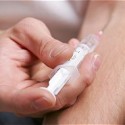Abstinence the path to avoid alcoholism
Parents throughout Victoria and Canada are vehemently opposed to their children taking illicit drugs — but what about the most widely used, and deadliest drug of all?
There is a killer that lives among us every day — a killer called alcohol.
In recent years, it has been common practice for parents to condone underage drinking as long as it is done under their supervision; offering comments like, “Well, they are going to do it anyway, so I would rather they do it at home where they won’t get into trouble.”
As parents, we would think nothing of quitting smoking and removing cigarettes from our homes if we felt our actions would influence our children not to smoke. If we smoked marijuana, we would make sure our children did not see us, or smell it, so as to not influence them. But we firmly deny that setting an example with alcohol makes any difference at all.
We like to think that marijuana is the gateway to more harmful drugs like methamphetamines, but most people who try marijuana have used alcohol first.
In Canada, alcohol is a factor in about 6,000 deaths per year. The largest number of these alcohol-related deaths are from injuries resulting from falls, drunk-driving collisions, assaults and drowning, according to a report released in March 2008 by Graham L. Pollett, medical officer of health in Ontario.
Last week, the Office of the Provincial Health released its Alcohol Policy Review, which indicates that underage alcohol use is common in B.C., with 79 per cent of in-school youths reporting using alcohol at least once by age 17.
In 2003, a report published by the McCreary Centre Society, Healthy Youth Development; South Vancouver Island Region, states that nearly two thirds (63 per cent) of students in the region have had a drink. It also reports that 57 per cent of students in B.C. have tried alcohol, with 39 per cent of those youths at the age of 14 years and under, with an astonishing 74 per cent of 15- and 16-year-old students having used alcohol and an alarming 85 per cent of those 17 or older having tried alcohol.
Furthermore, the report states that over a third (37 per cent) of students in the region who have used alcohol first tried it before the age of 13, with a substantial number of students being frequent and heavy drinkers. The report goes on to say that 32 per cent of males and 26 per cent of females have engaged in binge drinking in the past month in the south Vancouver region alone. (Binge drinking is defined as having five or more alcoholic drinks in a couple of hours and is associated with a high rate of other risk behaviours).
It is time to wake up and take responsibility for what is happening to our youths. Alcohol abuse begins in the home. Parents are the most powerful influence when it comes to keeping teens away from alcohol and illicit drugs.
The Center for Addictions Research remarks, “It is important to emphasize that abstinence is a healthy lifestyle choice” (Following the Evidence: Preventing Harms from Substance Use in B.C., March 2006).
We have been taught to think that the key to appropriate drinking habits is teaching our children to “drink responsibly.” This idea is a fallacy. We cannot teach anyone to drink responsibly; what we are actually doing is teaching them to drink. No one starts drinking to become an alcoholic.
When we begin to drink alcohol, it is like playing Russian roulette — except instead of bullets, the empty chambers are moderate drinkers, and the loaded chamber is an alcoholic.
When we teach our children to “drink responsibly,” we are playing a dangerous game with their lives and their future. Is that alcoholic chamber destined for your child? This is a question that should be at the forefront of our drinking habits.
The only way to combat this problem is to set an example for others. Peer pressure and other outside-influence risk factors are still out there, for even the non-drinking family, but we increase the odds and place our children at an even higher risk if we ourselves set the example of having even an occasional drink.
In order to teach zero tolerance to our children, we must first be willing to apply it to ourselves as parents. Alcoholics come from moderate drinkers and not from those who abstain.
It is not freedom to drink we need, but freedom from drink.
Chaun Stirling is a staff member of the Independent Press, Forsyth, Montana and is founder of the Big Horn County Crime Prevention Council. Michael Farrell of Victoria, B.C., is editor and publisher of The Manual of Temperance and has been an active advocate of abstinence from alcohol for over a decade.
source: Times Colonist

